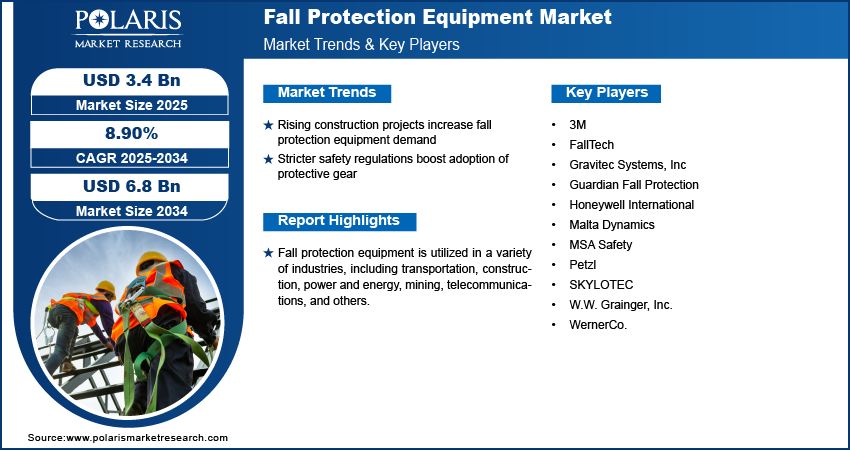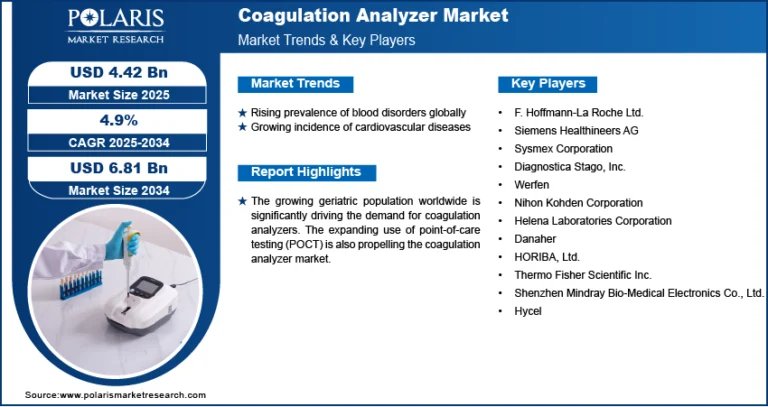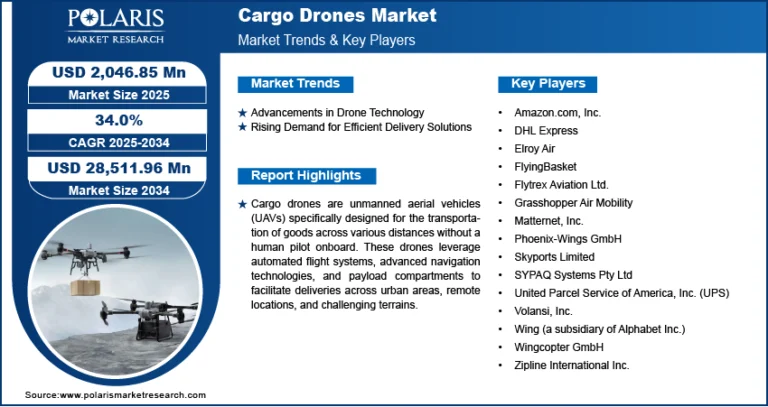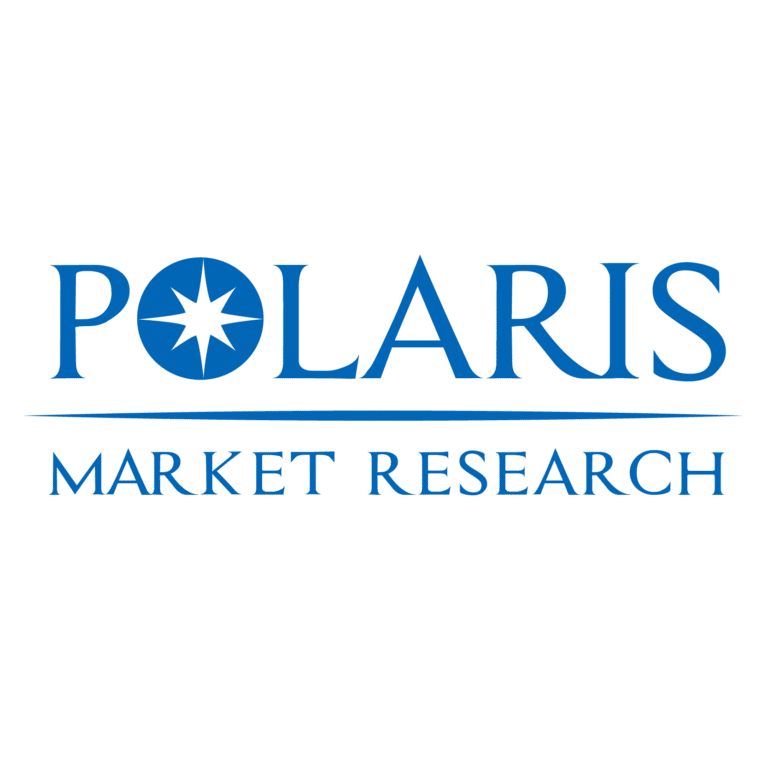Fall Protection Equipment Market Anticipated to Reach USD 6.8 Billion By 2034, Growing Consistently at 8.90% CAGR

The global Fall Protection Equipment Market was valued at USD 3.1 billion in 2024 and is anticipated to grow at a CAGR of 8.90% from 2025 to 2034. Strict workplace safety regulations and construction industry growth are key drivers.
Fall Protection Equipment Market – Trends & Insights
- Smart Fall Protection Systems: Integration of IoT and sensor-based systems enables real-time monitoring of worker movement, fall detection, and immediate alerts to enhance on-site safety response.
- Ergonomic and Lightweight Designs: Manufacturers are increasingly focusing on comfort and wearability, reducing worker fatigue while ensuring compliance through innovative, user-friendly gear.
- Increased Use in Residential Construction: The growth in residential and urban infrastructure projects has widened the application base of fall protection equipment beyond traditional industrial sectors.
- Rise of Compliance-Based Purchasing: Buyers are more inclined to select equipment that meets global safety certifications and regulatory standards, driving innovation and standardization in product development.
- Focus on Training and Awareness: Alongside equipment sales, there is a growing emphasis on training services and fall protection programs to ensure effective implementation and reduce human error.
Market Size & Forecast
Market size value in 2025 USD – 3.4 billion
Revenue forecast in 2034 USD – 6.8 billion
CAGR – 8.90% from 2025 – 2034
Request for Free Sample:
Market Overview:
The Fall Protection Equipment Market plays a critical role in ensuring worker safety across industries such as construction, oil & gas, manufacturing, transportation, mining, and utilities. This market includes a wide range of products like harnesses, lanyards, self-retracting lifelines, anchor points, guardrails, and personal protective gear. The increased focus on workplace safety regulations, combined with the rise in high-risk operations, has contributed to sustained demand for reliable and certified fall protection solutions. The market is undergoing innovation through ergonomic design, advanced materials, and integrated safety systems to enhance user comfort and reduce workplace accidents.
Key Market Growth Drivers:
- Stringent Occupational Safety Regulations: Government mandates and workplace safety laws are key drivers, compelling employers to adopt certified fall protection equipment.
- Growth in Infrastructure and Industrial Projects: Expansion in construction, energy, and transportation projects globally is generating consistent demand for fall protection gear.
- Rising Awareness About Worker Safety: Increasing emphasis on reducing workplace injuries and fatalities is leading to higher investments in personal protective equipment.
- Technological Advancements: Innovations in materials (e.g., high-strength webbing, corrosion-resistant metals) and smart wearables are improving the functionality and reliability of fall protection systems.
- Insurance and Liability Concerns: Businesses are proactively adopting fall protection equipment to minimize legal liabilities, insurance costs, and productivity losses from workplace incidents.
Market Challenges:
- High Cost of Advanced Systems: Smart and integrated fall protection equipment systems can be expensive, creating barriers for adoption among small and medium enterprises.
- Lack of Standardization in Some Regions: Inconsistencies in safety regulations and enforcement across countries can hinder global market penetration and compliance efforts.
- Low Adoption in Informal Sectors: Many small-scale industries and developing markets show limited usage of fall protection equipment due to lack of awareness or regulatory pressure.
- Training and Usage Gaps: Even with the right equipment, lack of proper training or incorrect usage by workers can reduce effectiveness and increase accident risks.
- Maintenance and Inspection Challenges: Ensuring regular maintenance and compliance with inspection protocols is essential but often overlooked, affecting product performance and safety outcomes.






